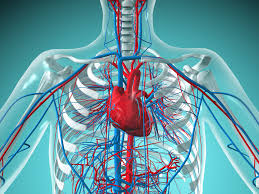Many people ask that how many veins are in the human body? It pretty impossible to think how many veins are in the body as you would need to be able to define one vein from another. If you was stretch the human vasculature out end on end it would stretch about 100,000 miles of veins, arteries and capillaries.
What are the veins?
Also known as blood vessels, veins are conduits whose purpose is to transport blood to the heart and distribute oxygen, carbon dioxide and metabolic waste to the rest of the organs and tissues for use or elimination through a pumping mechanism.
Characteristics of the Veins
Among the most outstanding characteristics of blood vessels are their tubular morphological condition through which blood circulates and the large amount of collagen contained in their thin, smooth, and elastic walls. In addition, the veins have a shallower location, although there are less visible or tangible structures.
Another important feature of veins is the ability to direct blood flows through semilunar valves. These prevent the return of blood and allow it to circulate freely towards the heart. To better understand these aspects, let’s look at two of its most essential components: layers and structure.
What are the layers of the veins?
Just as blood vessels, arteries and veins are made up of 3 layers:
- External or adventitial layer: this layer constitutes a large part of the venous tissue or wall, and is made up of loose connective organic material with high levels of collagen, and longitudinally distributed muscle cells.
- Middle or muscular layer: represents the middle wall of the blood vessel, known for having elastic muscle tissue and for allowing it to adapt to the different pumping rhythms and directionality of the blood.
- Intimate, internal or endothelial layer: it is the area belonging to the wall of the veins and is in direct contact with the blood and represents the deepest tissue of the blood vessel.
Structure of the veins in human body
The structure of the veins is determined by the sub-systems of the circulatory system. It is a set of divisions and ramifications whose characteristics respond to both the location and its functions. Let’s see:
- Structure of the general venous system: this venous system responds to the aortic circulation and transports poorly oxygenated blood from the numerous capillary networks to reach the right atrium.
- Pulmonary venous structure: here this structure serves as for the small circulation between the heart and pulmonary organs
- Portal venous structure: it is a structure composed of the hepatic portal system and the hypophyseal portal system, which collects blood flows from the intestines to transport them to the liver, transform them, and return them to the vena cava.
Types of veins in the human body
In the following list you will find all the veins that are part of the circulatory system, except the arteries. These types also form ascending and descending structures in this system that collect blood or circulate it throughout the body. These are the types of veins:
Venules: they are the smallest and are formed with the union between capillary networks. They are made up of internal endothelial sheaths and smooth muscle fiber sheaths.

Capillaries: they are small networks of microcirculation that the arterioles veins with the venules. They fulfill a function of exchanging waste and nutrients throughout the bloodstream.
Superior and inferior vena cava: they receive blood drainage from the arms, neck and head, they are intrathoracic and end in the right atrium.
Subclavian vein: is a prolongation of the axillary vein that receives blood from the upper extremities and the neck and head from the great jugular vein.
Axillary vein: this is a vein that derives from the basilic vein and starts at one of the edges of the round inferior until it continues through the axillary artery.

Azygos vein: it is formed by the union of the ascending subcostal and lumbar veins, until it reaches the thorax through the aortic orifice of the diaphragm.
Head and neck veins: serve to drain blood from the neck and head to the internal jugular at the level of the brachiocephalic trunk and also to the subclavian vein.
Jugular vein: divides into internal, external, and anterior jugular veins. It drains blood fluid from veins deep in the head and neck and collects blood from the carotid artery.
Facial vein: this vein originates in the inner corner of the eye, joined by the frontal and supraorbital veins until it communicates with the superior ophthalmic vein.

Coronary veins: are those that make up the heart’s intravenous network and drain blood from its tissues.
Pulmonary veins: These are responsible for carrying oxygen-laden blood to the lungs.
Renal veins: responsible for collecting and transporting blood from the kidneys, the adrenal gland and the upper border of the urethra.
Differences between veins and arteries
These are the main differences between veins and arteries:
- Difference in function: These veins are carriers of the blood that flows in all veins
- Pressure difference: the arteries have a much higher blood pressure compared to the small pressure of the veins.
- Difference in dimensions: the size, thickness and resistance of the veins is much lower than that of the arteries due to the difference in blood pressure.
- Layer differences: although both have external, middle and intimate or internal layers, the arteries have greater muscle mass.
- Valve differences: arteries do not have valves to direct blood because of their direct connection to the heart. Veins, on the other hand, need valves to prevent the return of blood.
- Congenital differences: the arteries have the same morphological structure in all individuals, while the veins can be different for each individual.
Conclusion
We have seen so far what veins are, their types, characteristics, structure and the main differences between arterial and venous blood vessels. This leads us to a greater and better understanding of the circulatory system and its importance for the general functioning of all organic processes.
Also Read: How many arteries does the human body have?


